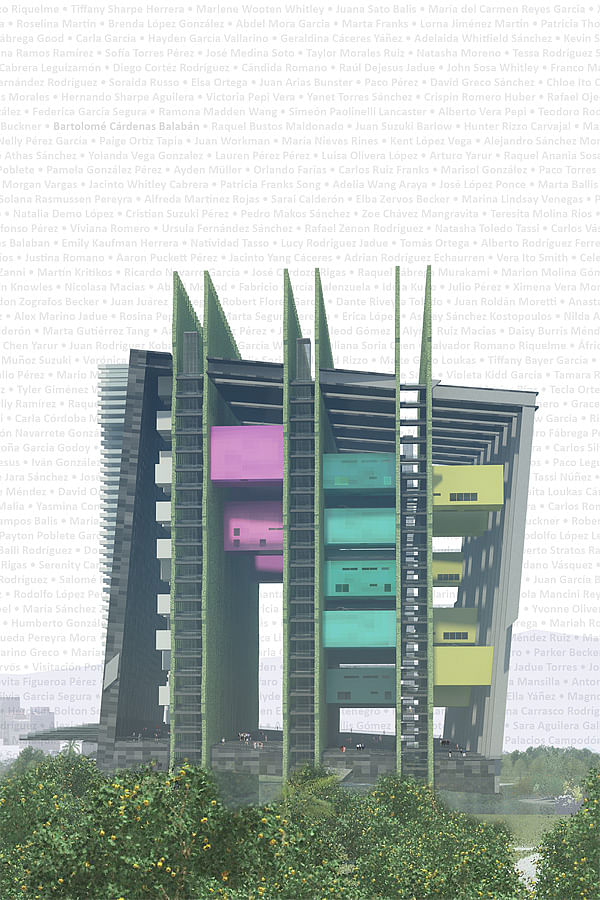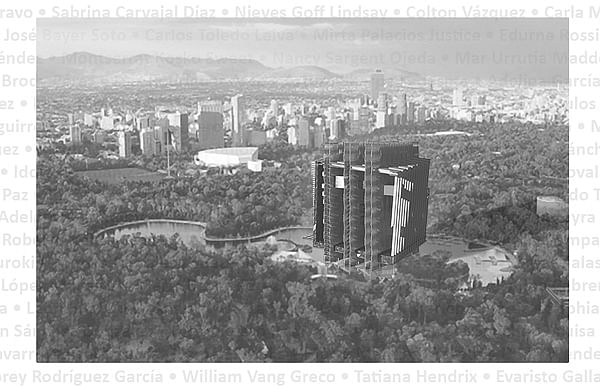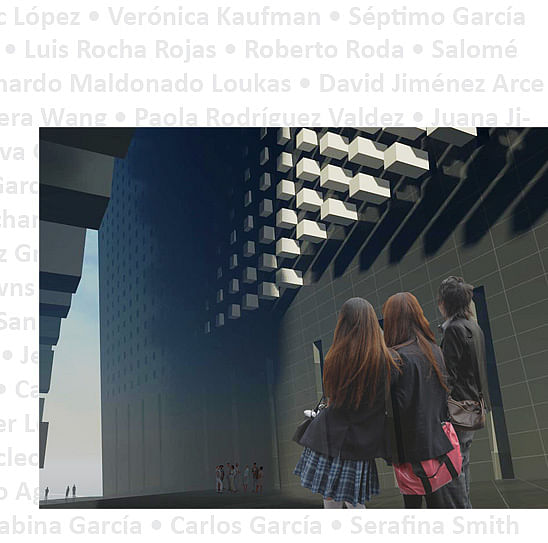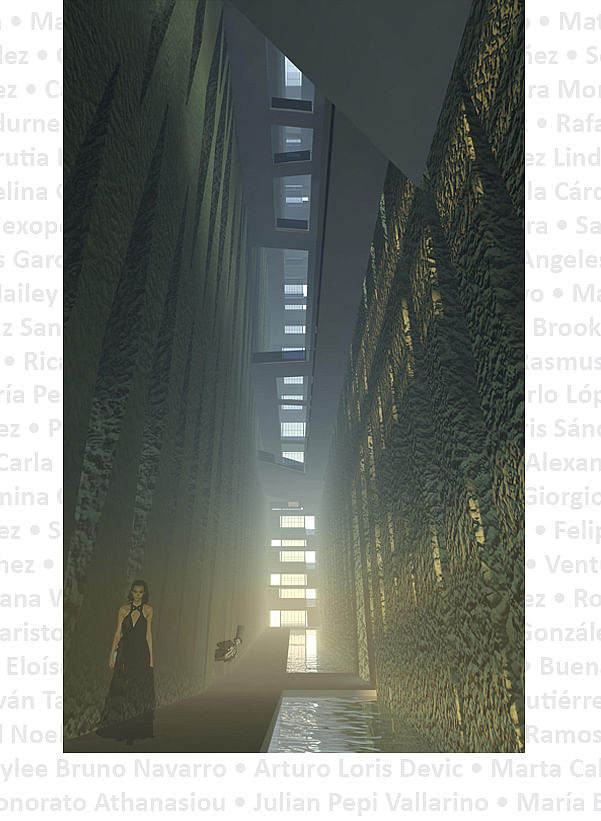anchor

The building seen from Lago Mayor’s north shore
The center’s north wall becomes a vertical cemetery – in it, the remains of 1,000 Lung Cancer victims are held in the Temporary Inurnment Vaults. After a period of time these Urns are either returned to the family or placed in the Permanent Inurnment Vaults. These tomb markers are on display to the city and become a new, dominant feature of Chapultepec Forest.
The building is clad in titanium dioxide-coated aluminum panels that clean the air around it. When the titanium dioxide of the panels reacts with water and oxygen in the air, it generates free radicals that oxidize the molecules of nitrogen oxide - the primary component of smog – turning them into a harmless nitrate.
17 more images ↓
Vertical Cemetery
Lung Cancer Victim Prayer Center and Cemetery
This competition entry for a "Necropolis" in Mexico City takes the form of a giant exposed cube set over Lago Central in the Parque de Chapultepec and houses chapels, vigil rooms, crematories, urns and crypts for lung cancer victims. A larger than life monument meant to raise awareness in one of the cities with the worst air pollution on earth, the building at the same time looks to dignify death and in doing so celebrate life.
Status: Competition Entry
Location: México Distrito Federal, MX







